Line symmetry
Categories: gcse geometry

We say that a shape is symmetrical if we can draw a line through the shape that divides it into two parts that are mirror images of each other. We call this type of symmetry line symmetry, or reflective symmetry.
We use the example of triangles to explore this further and then look at some other shapes.
Here is a video on the same topic:
Line symmetry of triangles
An isosceles triangle has two equal sides and two equal angles. This means that it is symmetrical:
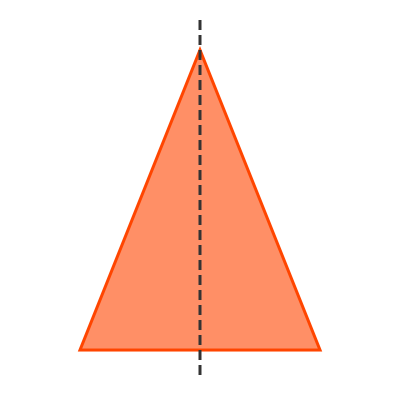
The dotted, vertical line divides the triangle into two halves, and each half is a mirror image of the other. If we were to fold the shape along the line, the two halves would match exactly.
The line goes from the top vertex of the triangle down to the centre of the base.
The dotted line is called a line of symmetry. There is only one way to fold an isosceles triangle, so we say it has one line of symmetry.
Here is a scalene triangle:
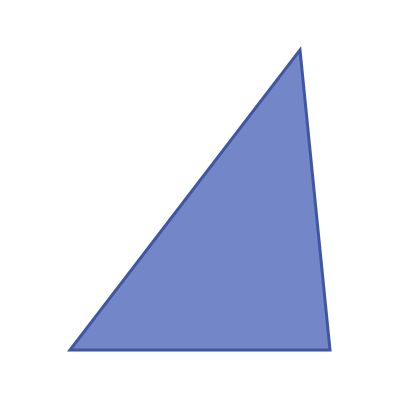
In a scalene triangle, all the sides and angles are different, so it is not possible to draw a line that divides the shape into two symmetrical halves. We say that the shape has no lines of symmetry.
Let's look at an equilateral triangle:

In an equilateral triangle, all three sides and angles are equal. We can draw a line of symmetry from the top vertex to the centre base, similar to the isosceles triangle.
We can also draw lines of symmetry from the other two vertices to the opposite side.
An equilateral triangle, therefore, has 3 lines of symmetry. The triangle can be folded along any of the lines of symmetry and the two halves will match.
We normally draw all the lines of symmetry on a single diagram, like this:
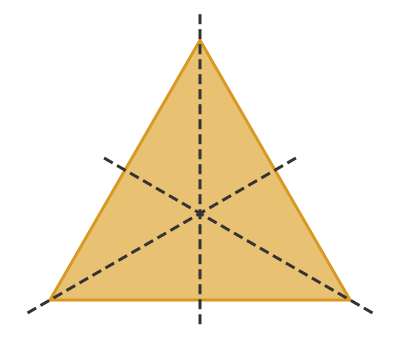
Line symmetry of a square
Here is a square:
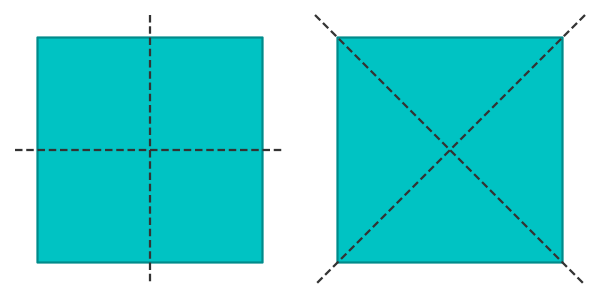
A square has a horizontal line of symmetry and a vertical line of symmetry, as shown on the left-hand square. It can be folded along either like to create a rectangle.
The two diagonals of a square are also lines of symmetry as shown on the right-hand square. It can be folded along either like to create a triangle.
This means that a square has four lines of symmetry. Here they are, all shown on the same diagram:
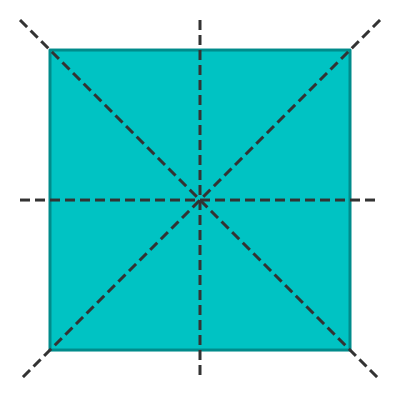
Line symmetry of a rectangle
A rectangle has two lines of symmetry:
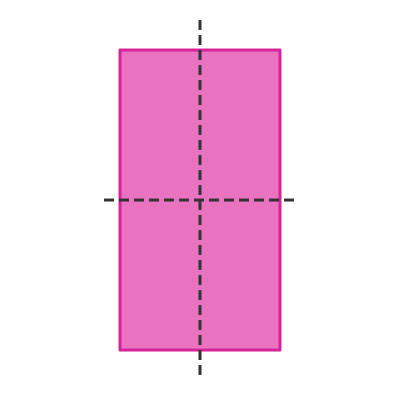
Unlike a square, a rectangle doesn't have diagonal lines of symmetry, as this diagram shows:
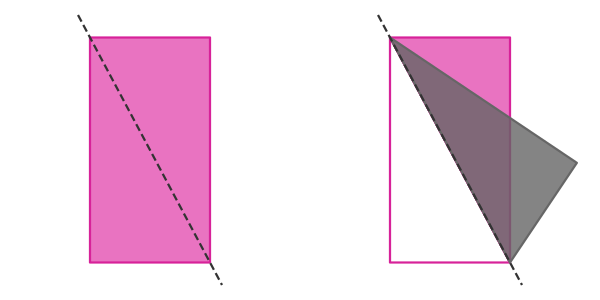
The diagonal divides a rectangle into two identical triangles, but they are not mirror images of each other. When the rectangle is folded over the diagonal line, the two parts do not match up, so the diagonal is not a line of symmetry.
Line symmetry of a trapezium
In general, the two legs of a trapezium do not have the same length or angle. This means that a trapezium has no lines of symmetry:
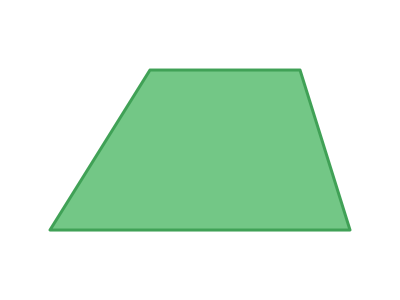
The exception is an isosceles trapezium. This is a trapezium where the two legs have equal length and have the same angle at the base (but both point inwards). In that case, there is one line of symmetry:
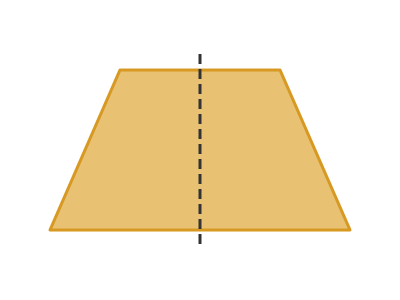
Line symmetry of a parallelogram
A parallelogram has no lines of symmetry.
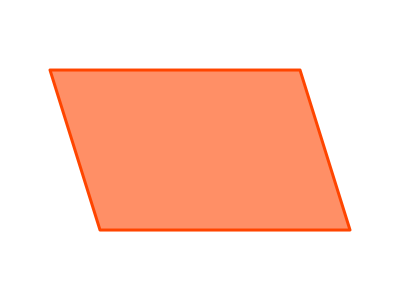
Line symmetry of a rhombus
A rhombus has two lines of symmetry, its diagonals:
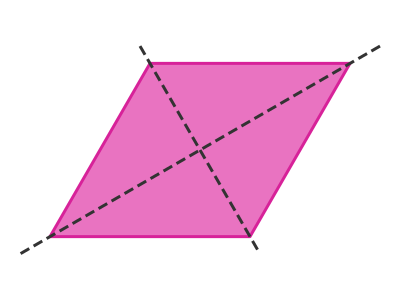
Line symmetry of a kite
A kite has one line of symmetry:
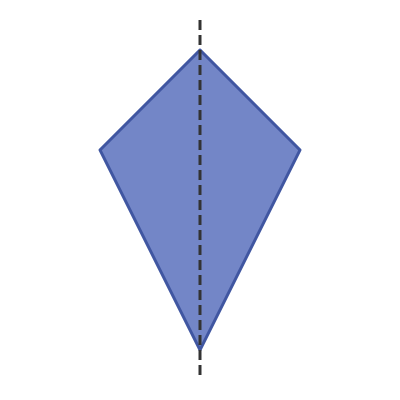
Line symmetry of a regular polygon
A regular polygon with n sides has n lines of symmetry. However, the way the lines of symmetry are arranged depends on whether the number of sides is odd or even.
We have already seen a regular polygon with an odd number of sides. It is the equilateral triangle, which we looked at earlier. We saw that it has three lines of symmetry. Each line is drawn from a vertex to the middle of the opposite side.
Other regular polygons with odd numbers of sides follow a similar pattern:
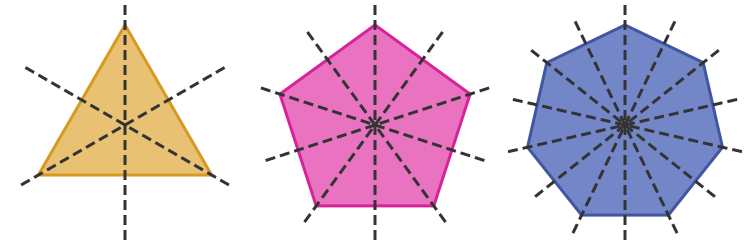
For example, the regular pentagon in the middle has 5 vertices and 5 sides. The lines of symmetry are drawn from each vertex to the midpoint of the opposite side.
Polygons with an even number of sides work differently. Again we have already seen an example, the square (a regular quadrilateral).
In the case of a square, there is a line of symmetry between the midpoint of the top and bottom sides. There is a line of symmetry between the midpoint of the left and right sides. The two diagonals are also lines of symmetry, making 4 in total.
Regular polygons with an even number of sides behave in a similar way to squares:
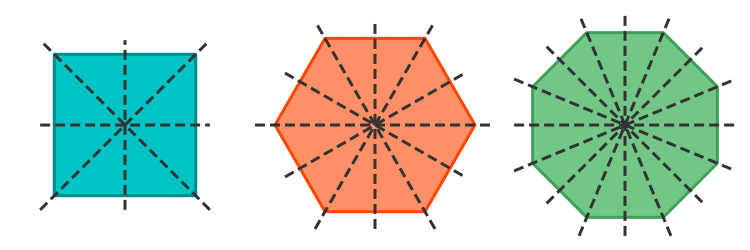
In the case of a hexagon, for example, there are 3 pairs of opposite sides, with a line of symmetry that passes through the centres of each pair. There are also 3 pairs of opposite vertices, with a line of symmetry that passes through each pair.
This means that a hexagon has a total of six lines of symmetry, as you would expect for a six-sided regular polygon.
See also

Join the GraphicMaths Newletter
Sign up using this form to receive an email when new content is added:
Popular tags
adder adjacency matrix alu and gate angle answers area argand diagram binary maths cartesian equation chain rule chord circle cofactor combinations complex modulus complex polygon complex power complex root cosh cosine cosine rule countable cpu cube decagon demorgans law derivative determinant diagonal directrix dodecagon eigenvalue eigenvector ellipse equilateral triangle euler eulers formula exercises exponent exponential exterior angle first principles flip-flop focus gabriels horn gradient graph hendecagon heptagon hexagon horizontal hyperbola hyperbolic function hyperbolic functions infinity integration by parts integration by substitution interior angle inverse hyperbolic function inverse matrix irrational irregular polygon isosceles trapezium isosceles triangle kite koch curve l system line integral locus maclaurin series major axis matrix matrix algebra mean minor axis n choose r nand gate newton raphson method nonagon nor gate normal normal distribution not gate octagon or gate parabola parallelogram parametric equation pentagon perimeter permutations polar coordinates polynomial power probability probability distribution product rule proof pythagoras proof quadrilateral questions radians radius rectangle regular polygon rhombus root sech segment set set-reset flip-flop sine sine rule sinh sloping lines solving equations solving triangles square square root standard curves standard deviation star polygon statistics straight line graphs surface of revolution symmetry tangent tanh transformation transformations trapezium triangle turtle graphics uncountable variance vertical volume volume of revolution xnor gate xor gate